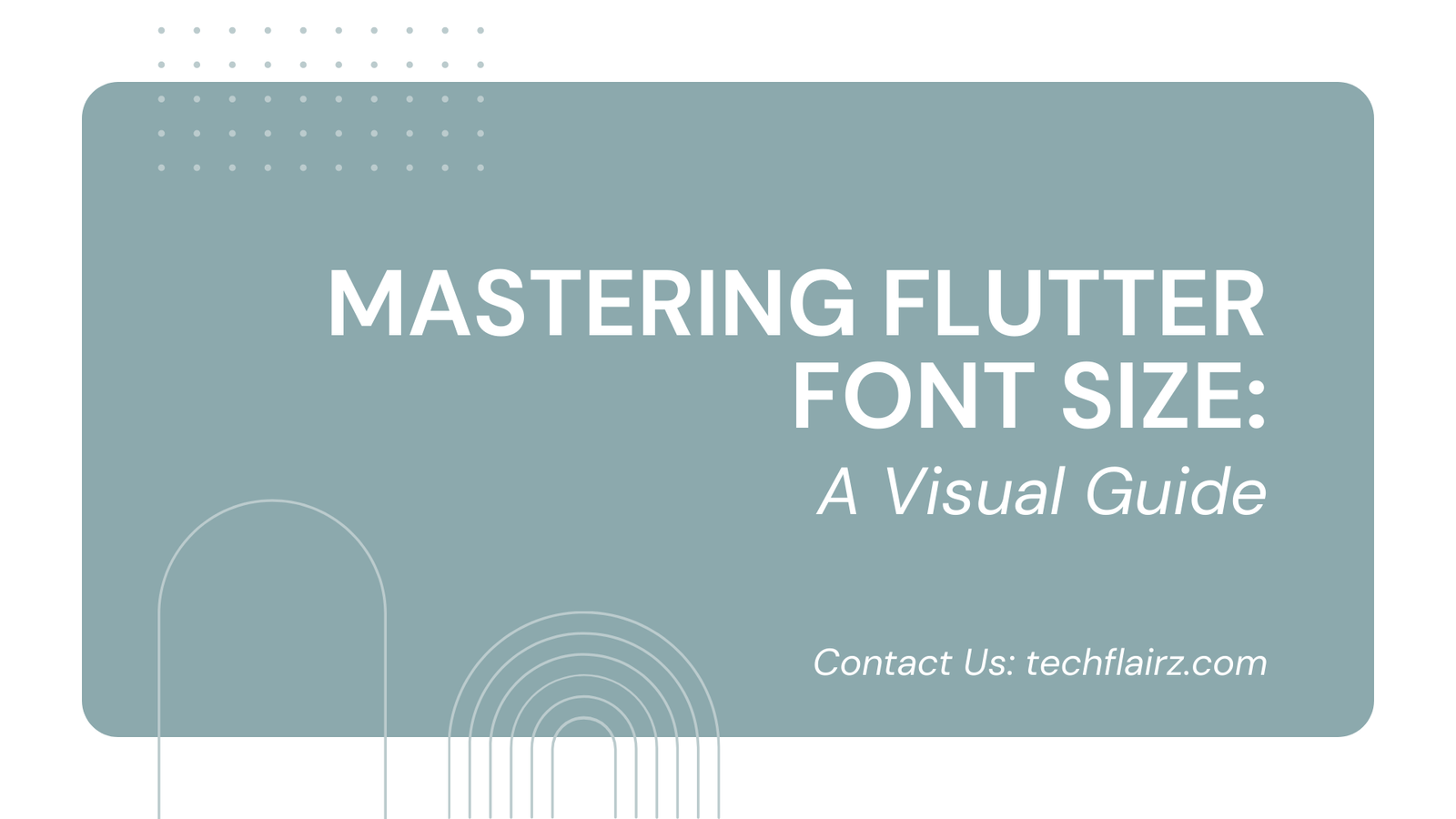Welcome to our comprehensive guide on Flutter font size! In this article, we’ll delve into the intricacies of Flutter text size, exploring common challenges and providing actionable strategies to overcome them. Whether you’re a novice Flutter developer or an experienced pro, this guide aims to decode the mysteries behind font size errors in your Flutter application.
II. Understanding Flutter Text Size
Before we dive into solutions, let’s establish a solid understanding of how Flutter handles text size. Flutter’s flexibility allows developers to create visually appealing and responsive user interfaces, but it also brings about unique challenges when it comes to font size consistency.
In Flutter, text size is a critical aspect of UI design, impacting the overall user experience. Whether you’re dealing with small mobile screens or large tablet displays, finding the right balance is essential.
The Role of TextStyle in Flutter
One key player in controlling text size is the TextStyle class. By manipulating various properties within TextStyle, developers can achieve precise control over font size, weight, and other visual aspects of text.
Text(
'Hello, Flutter!',
style: TextStyle(fontSize: 20.0),
),
III. Challenges with Text Size on Different Screens
As developers, we often face challenges when it comes to maintaining consistent text size across a diverse range of screens. Flutter’s “one size fits all” approach may not always suffice, leading to font size discrepancies that affect the app’s aesthetics and usability.
Screen Density and Font Size Discrepancies
Flutter’s automatic text scaling based on screen density can sometimes lead to unexpected results. Understanding how different screen densities impact font size is crucial for addressing this issue.
Text(
'Dynamic Font Size!',
style: TextStyle(fontSize: MediaQuery.of(context).size.width * 0.05),
),
IV. Strategies for Adjusting Font Size in Flutter
Now that we’ve identified the challenges, let’s explore effective strategies for adjusting font size in your Flutter application. Whether you prefer responsive design techniques, media queries, or Flutter’s built-in accessibility features, we’ve got you covered.
A. Responsive Design Techniques
Responsive design ensures that your app’s UI adapts seamlessly to various screen sizes. Utilize LayoutBuilder to dynamically adjust text size based on the available width.
LayoutBuilder(
builder: (context, constraints) {
return Text(
'Responsive Text!',
style: TextStyle(fontSize: constraints.maxWidth * 0.04),
);
},
),
B. Media Query Implementation
Media queries empower developers to tailor the UI based on device characteristics. Leverage media queries to set font size breakpoints for different screen sizes.
Text(
'Media Query Text!',
style: TextStyle(
fontSize: MediaQuery.of(context).size.width < 600 ? 16.0 : 20.0,
),
),
C. Flutter’s Built-in Accessibility Features
Flutter offers accessibility features that can enhance the user experience for individuals with varying needs. Leverage the Semantics widget to ensure proper text scaling for accessibility.
Semantics(
child: Text(
'Accessible Text!',
style: DefaultTextStyle.of(context).style,
),
),
V. Case Studies: Font Size Solutions for Various Screen Sizes
Let’s examine real-world case studies to understand how developers have successfully implemented font size solutions for different screen sizes. These examples will provide practical insights and inspiration for your own projects.
VI. Best Practices for Flutter Font Size Mastery
As we wrap up our guide, it’s essential to highlight best practices for mastering Flutter font size. Consider these tips as a handy reference to ensure consistent and visually appealing text size in your Flutter applications.
- Always test your app on a variety of devices to identify potential font size discrepancies.
- Use device-independent units like logical pixels (
dporspin Flutter) for a more consistent user experience. - Regularly update your app’s UI to adapt to the latest Flutter releases and best practices.
VII. Conclusion
In conclusion, mastering Flutter font size is a crucial aspect of delivering a polished and user-friendly mobile application. By understanding the challenges, implementing effective strategies, and learning from case studies, you can ensure that your Flutter app provides a seamless and visually pleasing experience across diverse devices.


